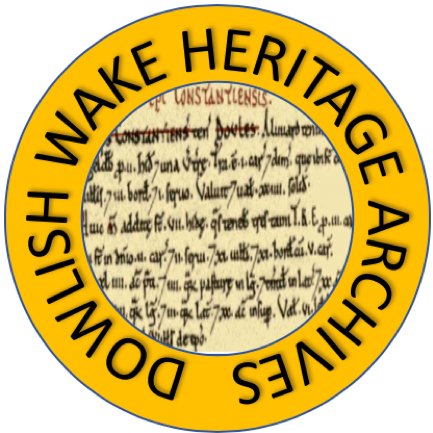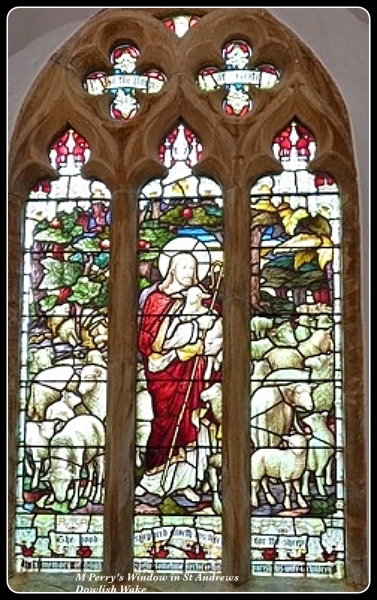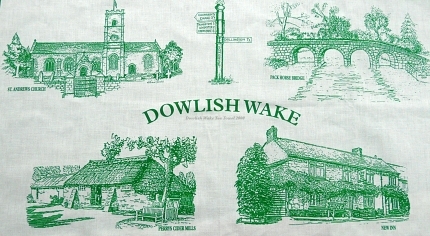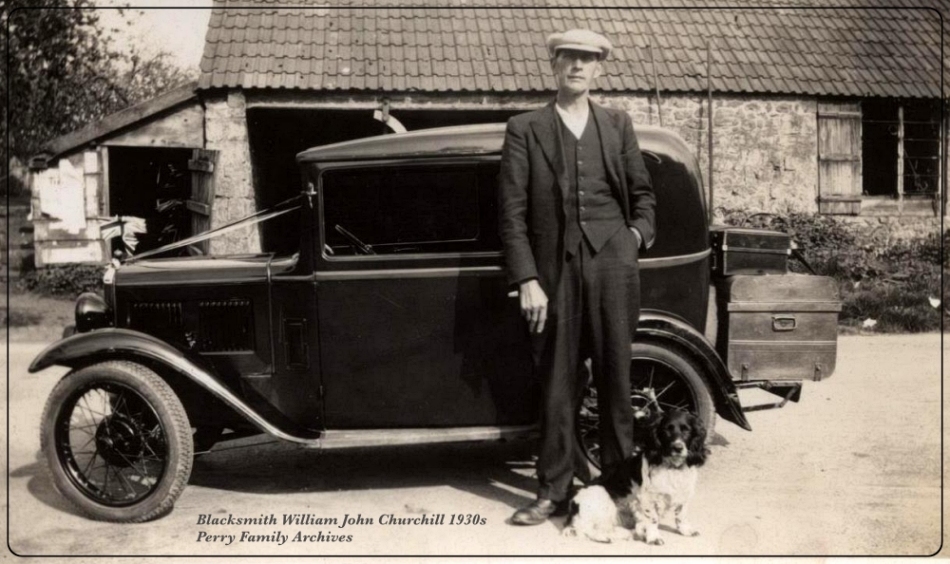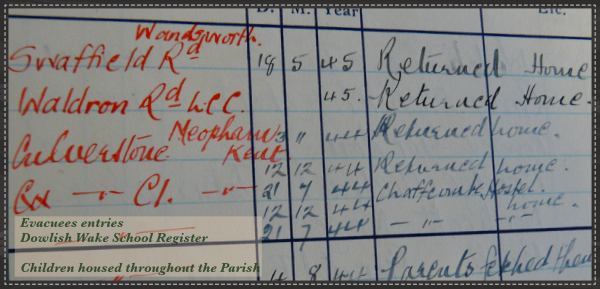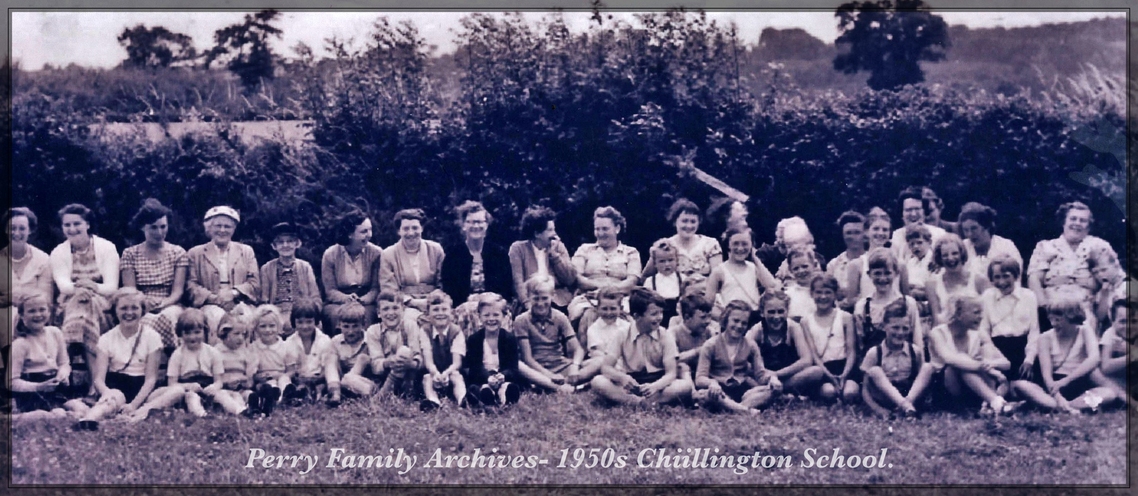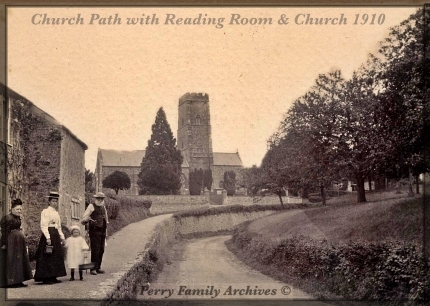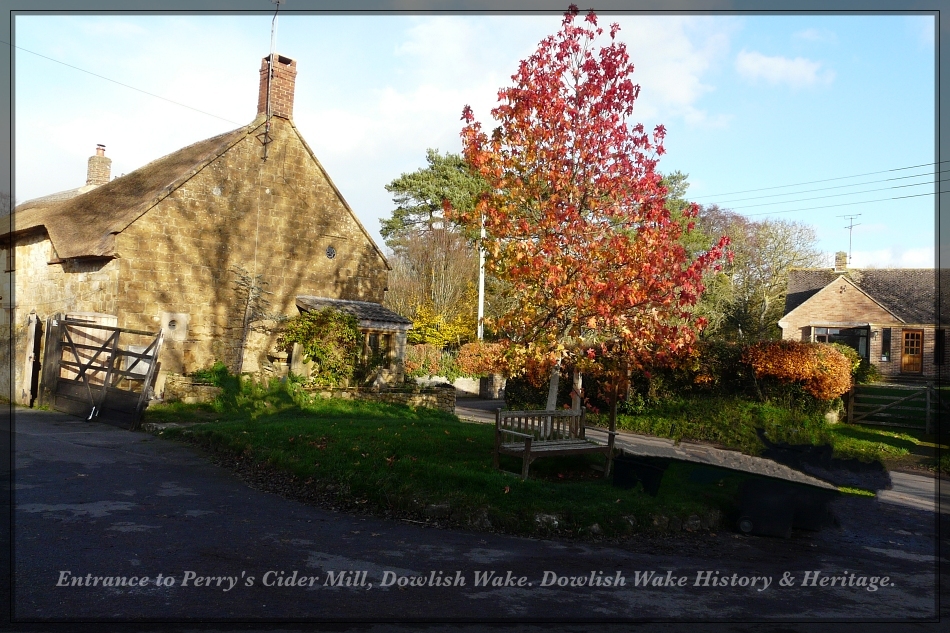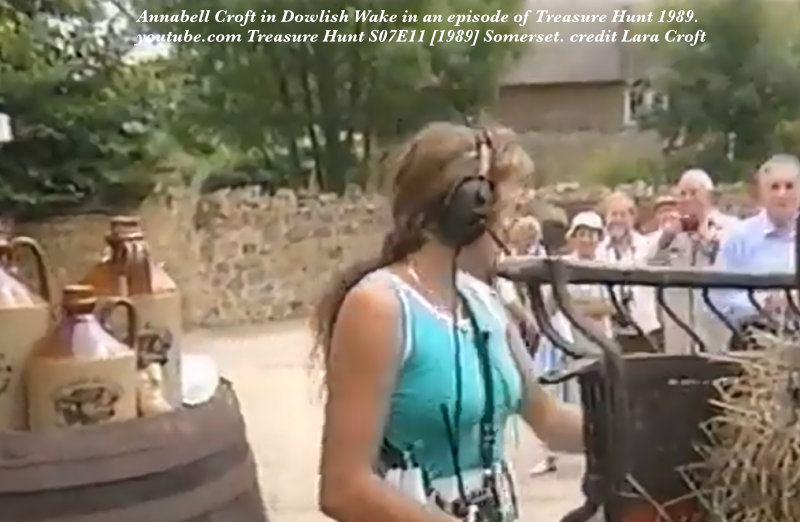-
-
-
Memories of life in Dowlish Wake.
-
-
-
-
-
Taken from Marguerite Perry’s village archive notes.
-
-
Marguerite Perry, 'Margie' to many, shared with us and others in the village, conversations recalling her life in Dowlish Wake. We are also fortunate to have access to her many records, allowing us to appreciate what has gone, will now not be forgotten. Details of dates, events, village folk, farms, cottages and village happenings. Her notes and jottings over the years and her safe-keeping of them, bringing alive memories of Dowlish Wake and it’s past.
Marguerite spoke of the Bakery located at the Mill, in Mill Lane, operated alongside the daily business of grinding grain. The baker sold bread at the Mill and delivered bread around the village by cart. Marguerite remembered her ‘Granfy,’ telling her that, as a child, he held the baker’s horse. While some cottages had bread ovens, many in the village took their dough to the Mill to be baked. At Christmas, the baker would also oblige by cooking villagers' joints of meat in his ovens. All that ended during the war, as the miller was called up for service.
The village was mainly self-sufficient before the war. A post office and a shop, housed in the two-storey annexe of Myrtle Cottage [now a single-storey garage]. At another time, Mrs Perry ran a post office in what is now 'The Old Post Office'. There was a cobbler in Spring Cottage. Earlier there had been a butcher's shop at 'The Haven', now named 'Beam Ends' in Mill Lane. The village farms and the New Inn made their own cider.
Later there was a bus that would take folk into Ilminster. There was also a taxi service on offer, a horse and wagon, which could be hired for longer journeys too! Otherwise, the village was served by travelling shops.
Wagons were made in the village at Roswell’s farm - Lower Wallbridge. The carpenter cum undertaker, Mr Gray, made coffins and arranged for people to be ‘dispatched’. Granfy said that when anyone died, the kids used to go, look and imagine all sorts of things coming out of the box.
The attractive little building with a tin roof in the lane by Primrose Cottage, once a Coopers store and workplace. Opposite, at Prospect Cottage stood the carpenters and wheelwrights’ shop. In the nearby brook, a large hole was used as a sawpit. A wheelwright, too, at what is now Midford’s.
Of appeal to village children, the blacksmiths shop with its forge. Here, the blacksmith kept busy, village horses regularly requiring new shoes. The earlier location of this forge and blacksmith, Wallbridge Farm, later the single-storey building where Perry’s Cider now have their office. Early Dowlish Wake blacksmiths were James, Joseph and George Gange. Later Joseph Churchill, followed by his son, William John Churchill.
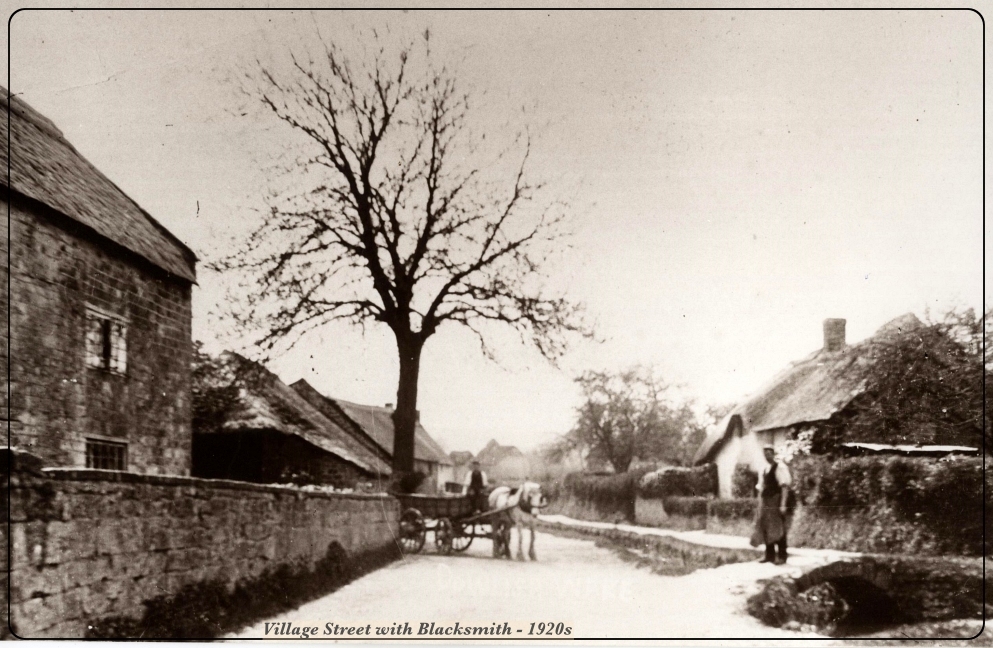
It was he, William John Churchill, who, in 1915, at 29 years of age, 'joined up' as a shoeing smith at Dorchester. He then served in France, and on returning home after the war, he delighted children by making bangles from souvenir-spent brass shells! A more recent blacksmith was 'Ginger' Board. He worked with blacksmith William John Churchill before leaving to work in Ilminster at Minster Stone.
Children had their playing fields, and there were plenty of them to make up teams. Football played on one of the fields in Cudworth Lane. Cricket on Sumption’s ground, what is now Lawrence Kellett playing field. In this field It was here, too, that before WW2, a grass tennis court had been marked out. Children playing on these fields on a Sunday, but the practice was very much frowned upon. A tennis club was formed, and matches were played here on this court and other courts in the village, the larger houses having the grounds to provide what was, at that time, a very popular sport. Bike riding was popular, and children learning on the flatter cricket field. Elsewhere in the village, there was a squash court.
School was held in what is now Speke Hall, built by William Speke as a church school. In the early years the school week would see children from Kingstone, Moolham, Oxenford and Allowensay, join the Dowlish Wake children. Built in the 1840s, there were over a hundred pupils at one time. It was said there was a mezzanine, an upper gallery that held one class and a small room to the west that held another. The main room was heated by an iron stove. In better weather, classes would be taken outside in the nearby field, desks were carried out, and lessons commenced in the sunshine. [Strangely, that’s how most remember those days, long sunny days, even weeks outside, which was just as well as there was very little room inside] The toilets were mere buckets in the toilet block at the back of the school, only later were outside toilets added.
At the outbreak of war, evacuees arrived at the station platforms of either Donyatt or Ilminster. They were then taken to nearby villages, in whatever state such a traumatic ordeal found them, to be distributed to different farms and cottages. Dowlish Wake and Kingstone took in several children who joined the local children at school here. During this time, following on from the many school teachers and assistants down the years, was one Miss Sarah Selena Humphries, grandmother of Henry Perry. She, the school Head Mistress arriving in 1897 and leaving in 1923. Following on from Miss Humphries was a Miss Sarah Sing, then later a Miss Snell. Home for the village teachers; two adjoining terrace cottages in Main Street, the ‘Old School House’ and ‘The Brades’. The Dowlish Wake school closed around 1950, and the children went to Chillington School. It was Miss Smell who later would accompany all the children to their new school. The salary of the teachers was paid by County funds.
After the 1920s, older children went to Ilminster, Ditton Street school. These older children had to find their own way to school, and ‘Granfy’ remembered having received an allowance of £2-10 shillings (£2-50] for his bike to get to school! Children attended Sunday school, with an annual outing to the seaside, travelling by horse-drawn wagon. Sunday school continued until the 1960s when Rev Cave left. School-leaving age was twelve years [later 14 years], most children working full time in the fields for their family 'tenanted' dairy farm holding or maybe employed at the bigger farm unit, Dowlish Manor Farm.
Marguerite spoke of her memory of some children, without footwear, walking barefoot to and from school, in all weathers. Some of the children arrived at school with little or nothing to eat, some having eaten a slice of bread on the way. Particularly in the 1920s, after the war, many children and their parents were experiencing hard times. A ‘makeshift soup kitchen’ was organised. Vegetables and meaty butchers’ bones were donated by local people, which the village ladies cooked and served to children and some parents. With times hard, the village found the bread was less palatable, made with lower quality grain, coarser and darker. This a time of great hardship, many men without employment.
Speke Hall, as it was known after Dowlish Wake school closure, continued to be a valuable communal meeting place, hosting many activities. Village trustees purchased Speke hall sometime around 1970. They gave up a lot of their spare time to build a kitchen and move the toilets to the back of the now large room of the hall. This saved folk from having to go out in the dark on winter nights to use the outside toilets. This work made the hall a pleasant meeting place for the village and a useful facility for parishioners after church services and special events at the Church. The car park shared with the Church.
Like the children in the summertime, chairs and tables were taken outside on summer evenings for whist drives. Indoor and out, Speke Hall provided accommodation for church fetes, dances, concerts and plays. In 1928 there was an active drama group, The Dowlish Players. Also the village Women's Institute, its beginnings in 1919, continuing right up to 2005. Their meetings included instructive craft sessions, particularly during the war, to raise funds for the War Effort. Another popular group, the Girls’ Brigade, not discontinued until 1939, their last meetings held in the rectory. PCC meetings, voting booths on election day, overflow venue for funerals, with a relay system installed. This attractive building proving over the years such benefit to the community.
In Dowlish Wake the annual club day of the Dowlish Wake Friendly Society was a huge event. The men marching through the village with their banners led by the Dowlish Wake Band. Drinking cider at each of the several farms, then on to a welcome meal at the New Inn. Here in the afternoon and into late evening in the field across the road, merrymaking, games, speeches and prizes for the children and adults.
The New Inn, formerly The Horseshoe, like most, made their own cider. On moonlit nights folks could be seen dancing in the lanes if someone had an instrument. Up the lane at Kingstone, the Castle inn, formerly The Folly. A third pub is recorded in the 1700s, and some think it could have been maybe Wayside or Bridge Cottage.
Near Speke Hall on Church Path, one of the three cottages was made into a Reading Room, a men only facility provided by Speke. Perhaps an attempt to ‘improve’ his workers with books and newspapers. Villagers remembered the games of billiards and enjoying a round or two of amateur boxing, in what were quite small rooms. All this was interrupted in the early 1920s, when the building was sold in the Speke estate sale. In later years this cottage with its delightful location within sound of the church bells became known as Hetty’s cottage. Meanwhile at some time the Men's club, founded in 1921, moved to the rectory before closing in 1948.
Marguerite Perry had spent over 70 years in Dowlish Wake, a Parish Councillor for over 50 years, instrumental in the bringing of necessary utilities to the village, water, gas, sewage plus the flood alleviation scheme. She was valued by all, whether alongside others in village activities or as a capable business women within what has been the success of Perry's Cider.
This concludes part 1, we give thanks to Marguerite Perry/ Mrs Perry/Margie, village historian: diligent collector, safe keeper and preserver of all things relevant to Dowlish Wake village history, without who so much would have been forever lost.
To Follow: Part 2– More Memories of Marguerite Perry
Further sources:
Worth seeking out are at two TV Productions featuring Dowlish Wake and the Cider Mill:
TREASURE HUNT 1989
TV Game Show with various locations in the British Isles. starring TV presenter and skyrunner Annabel Croft. [previous skyrunner had been Anneka Rice] Annabel in an iconic Jumpsuit, racing against the clock arrived in Dowlish Wake, Somerset, in 1989. Searching for clues to treasure having landed by Helicopter, her travels guided by a studio guests prividing her with cryptic clues.
TV Series running 1982 - 1989 on Thursday nights. Series 7.
Annebel Croft flew to Dowlish Wake on 27th April 1989. The programe visited in turn; Fleet Air Museum, Montacute House, Barrington Court, Dowlish Wake and Cricket St Thomas.
A video of the visit to Dowlish Wake and Perry' Cider. see youtube;
https://www.youtube.com/playlist?list=PLa_DbamFRdfKTk9ZoDAsmVHfzWHqqvACd
Show host: Kenneth Kendal. Adudicator: Wincey Willis
The website goosebears.co.uk provides a detailed breakdown of all episodes and relevant details.
CIDER WITH EVERYTHING 1965
TV Episode 1965 - A Grass Roots production - Cider with Everything
If you can find it online there is a short black and white film made by the BBC, February 17th, 1965 when the film crew visited Dowlish Wake, Perry's Cider and the New Inn. Residents point out Henry Perry and Walt Sumption together with 'Charlie' in his trilby hat. The later with his habit of humming or singing "Buttercup Joe".
Clip; BBC_NBS6011B SD
Search Links: IMBd
Found in the past on BBC Archives and Getty Images, may be behind a paywall at present.
